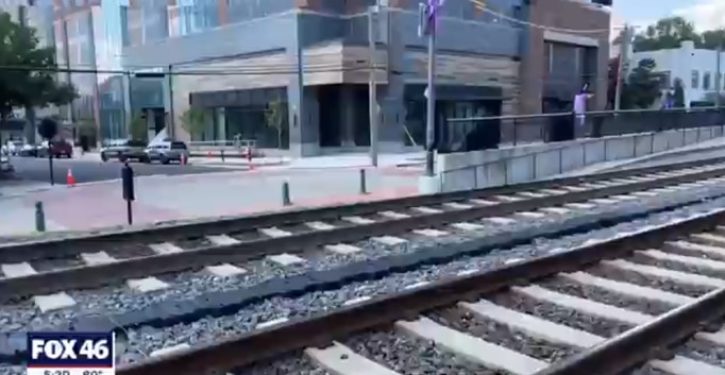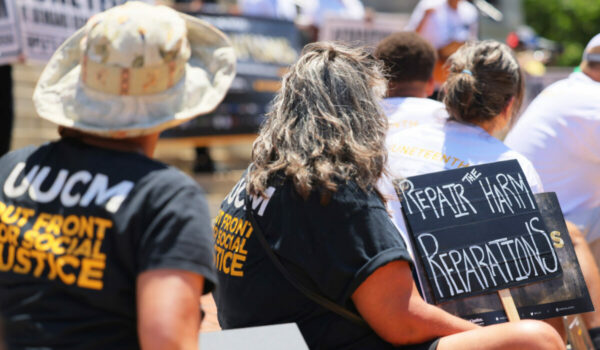
Why should you pay for a mass transit system that doesn’t transport masses of people — but rather consists of mostly empty trains and buses that use more energy per passenger than a car would? You shouldn’t, notes an article in the National Post called ‘Save the Environment: Don’t Take Transit.”
But California is doubling down on doing just that, reports Reason Magazine. The median resident of southern California took zero trips on mass transportation annually, and only 2 percent of the population frequently uses mass transit. And that was “before the pandemic, which caused ridership to plummet” further.
Yet California Governor Gavin Newsom recently agreed “to bail out these systems” using $5.1 billion in tax dollars, which will enable transit systems to avoid cutting wasteful spending and avoid making “difficult choices regarding which lines to keep operating, which projects to fund and which departments to trim.”
Some of the bus and rail routes Newsom is bailing out consume more energy per user than a car, because a bus or train consumes more energy than several cars do, meaning it has to carry times as many people as a car to make a bus or train trip worthwhile.
As Kevin Libin notes in The National Post, “Mass transit vehicles use up roughly the same energy whether they are full or empty, and for much of the time, they’re more empty than full. For the bulk of the day, and on quieter routes, the average city bus usually undoes whatever efficiencies are gained during the few hours a day, on the few routes, where transit is at its peak.”
Light-rail lines blame COVID for their problems. But as Reason’s Steven Greenhut observes,
Transit agencies were struggling long before anyone had heard of COVID-19. Ridership levels in almost every major transit system nationwide had been plunging for two decades. The agencies have had plenty of time to adjust to reality, but have not used it to develop new business models that appeal to riders. They haven’t even turned the corner on transit crime waves that literally scare off riders.
Instead of cutting superfluous bureaus or staff, reducing compensation (or at least reforming benefit packages), outsourcing contracts and adjusting routes, or trying innovative solutions (smaller buses, privatized alternatives), they’ve continued to offer these services in an antiquated way….
As I noted in my new short book, “Putting Customers First,” the state’s major transportation agencies focus on a variety of social concerns ranging from “equity platforms” to promoting affordable housing. The Caltrans future blueprint is more about battling greenhouse-gas emissions than creating bus systems that arrive on time and freeways that are less congested. It’s a long mish-mash of politically correct goals, bolstered by legislation that treats customer concerns as a side issue….By dumping more money into current systems without any mandate for change, we only get more inanity—e.g., “road diets” that increase congestion by reducing the number of traffic lanes in a silly quest to prod us into abandoning our cars.
The Biden administration is also ignorant of the wastefulness of many mass transit systems. It wants to spend $500 million on expanding a subway system whose ridership is tiny and is falling compared to the local population.
Even worse, the Biden administration also wants to spend $8.8 billion expanding D.C.’s Union Station, which handles only a small fraction of the traffic it used to. The subway line that runs through Union Station has far fewer users than before the pandemic, only about 40 percent of pre-pandemic levels. Commuter rail lines running through Union Station have even worse statistics. As of December 2022, Virginia Railway Express ridership was only a quarter of its 2019 levels. Its average rail car is only about 30 to 40 percent full on a weekday. Maryland Area Regional Commuter rail carried only a third of the people it carried just before the pandemic in February 2020. Rail ridership will never return to pre-pandemic levels, because of the rise in remote work. A third of the Washington D.C., metropolitan area population now works remotely, quadruple the number who worked remotely before the pandemic.
Trying to get people to ride mass transit systems was difficult even before the rise of remote work, because it takes so long to commute to and from work on mass transit. It can take an hour and a half to take buses or trains to work for a commute that would take only half an hour by car. Most train and bus stations are not right near where people live or work, and people taking mass transit often have to ride multiple different buses or trains to get to work.



